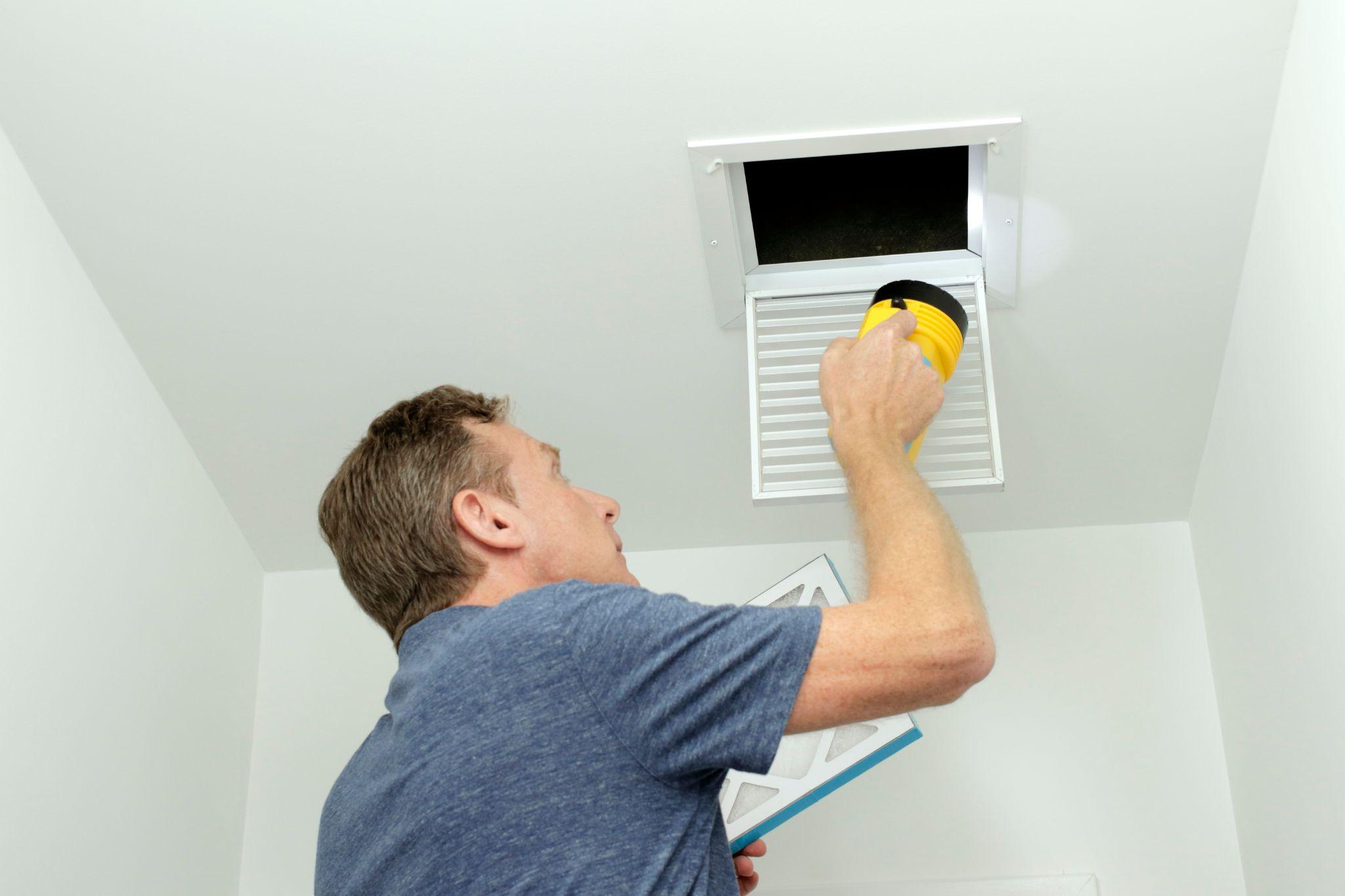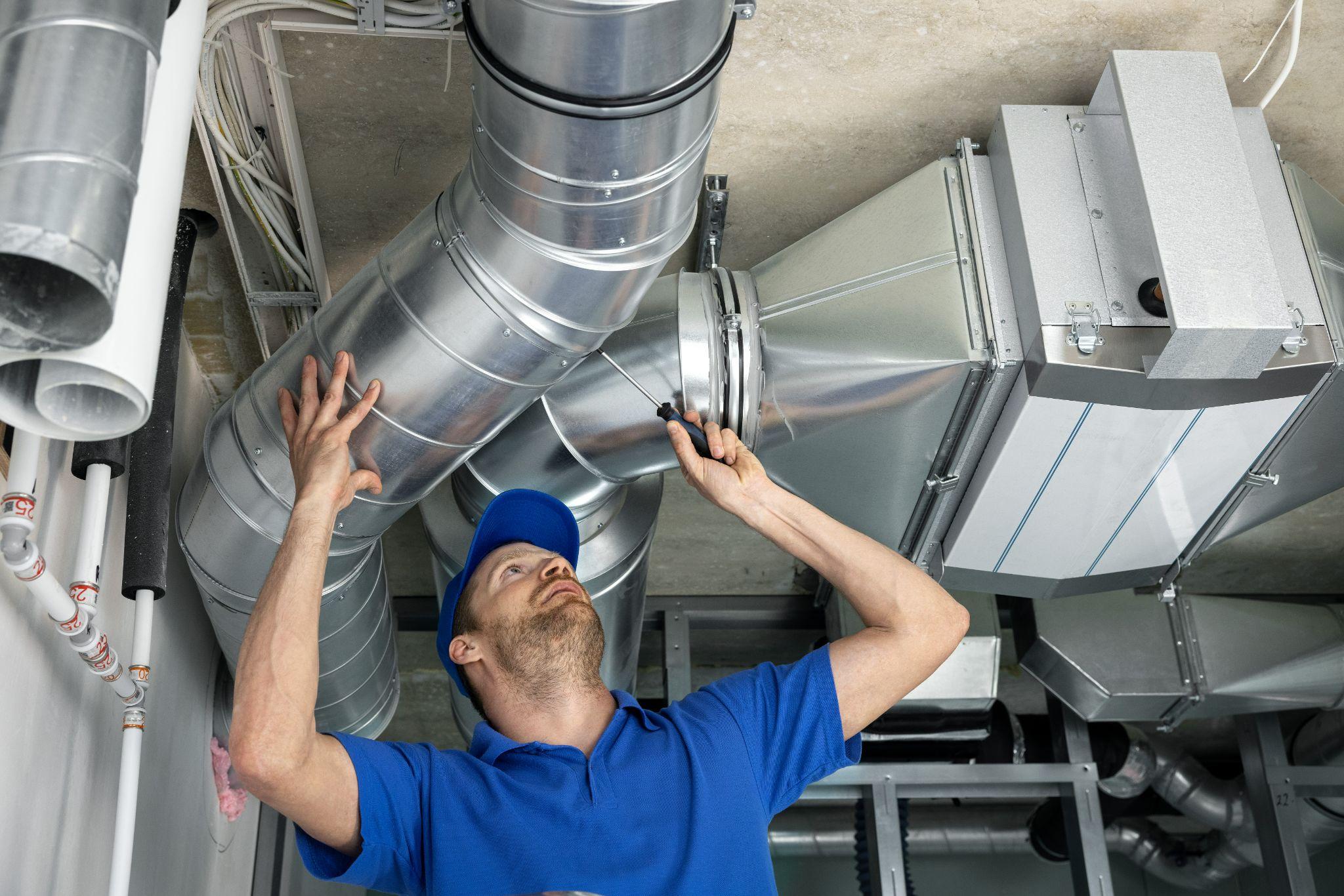How Do You Know if Your Duct System Is in Good Condition?

When your home has a forced-air cooling and heating system, it uses ductwork to force air throughout the house into the different rooms. A return air vent draws air out of the house and moves it through the air conditioning or heating system. However, you will need to consider air duct replacement or sealing eventually.
Why Is a Duct System Important?
According to Energy Star, most homes lose about 20 to 30 percent of the cooled or heated air in the duct system due to holes, leaks, or poorly connected ductwork. Unfortunately, most homeowners overlook their air ducts when maintaining their HVAC systems.
The duct system ensures that cooled and heated air is distributed evenly throughout the house. When there are leaks in the system, it causes a reduction in system air pressure.
As a result, the amount of air reaching each room in your home is diminished. In addition, your air conditioning or heating system has to work twice as hard to cool and heat your house.
So, how do you know if you need to repair or replace HVAC ductwork? By familiarizing yourself with the following signs.
Common Signs of Bad Ductwork

There are unexplained increases in your energy bills.
Suppose you notice your cooling or heating bills have been steadily increasing, and there have not been any major increases from your utility company. In that case, it is a good indication that your ductwork has air leaks.
Instead of keeping cooled or heated air inside the ductwork, it escapes. As the air escapes, it draws in uncooled or unheated air and pushes that air into the house. Therefore, your HVAC system has to run longer to reach your desired temperature setting.
You notice your house gets dusty really quickly.
While getting rid of dust completely is impossible, your home should not get dusty that fast. Yet, if you notice that dust is accumulating faster than usual, it could be a sign of bad ductwork. For example, you dust on Saturday and by midweek there is a thick layer of dust where you just dusted.
The excessive dust gets into your house through the air leaks in the ductwork. As we already mentioned, cooled and heated air is lost through the leaks, while uncooled or unheated air is drawn in. As this air is drawn in, it also draws in dust, which is blown throughout the home.
Your HVAC system seems louder than normal.
Your air conditioning and heating system will make some noise when it cycles. However, the noise should not be excessive. If it is, it can indicate a wide range of problems, including air duct problems.
For instance, if you hear a whistling noise when the system runs, this is common when the air leaks are sucking in air through tiny gaps. Another common sound you may hear is a rattling sound coming from the walls, ceiling, or floor, depending on how the ductwork was installed.
You notice an increase in pests inside the house.
Seeing a bug inside the home periodically is bound to happen. However, if you start seeing ants, roaches, or other bugs more often, this indicates they have gained access through an opening, often the ductwork. Increased rodent activity is another common sign of damaged air ducts.
Your seasonal allergies seem to be worse indoors.
If you notice you are sneezing or coughing more often indoors, this is directly related to the air quality inside your home. When you have problems with your air ducts, the air leaks can allow more allergens to enter the house through the cooling and heating system.
You have to change your air filter more often.
Another sign of bad ductwork to look for is how often you change your air filter. For example, if you have a 90-day air filter but have to change it every 45 to 60 days or sooner, this often indicates faulty ductwork that needs to be repaired or replaced.
You notice there are cold or hot spots in different parts of the house.
It is essential to remember air duct leaks can occur anywhere in the duct system. So, if you notice certain rooms in your home feel hotter in summer and colder in winter, it is a good idea to have your duct system inspected.
Should I Repair or Replace HVAC Ductwork?

Deciding whether repairing or replacing ductwork is best depends on whether you have a few areas that need to be repaired or if the entire duct system has numerous issues. Unless you replace the whole duct system, there are specific steps you will want to take to ensure the system is repaired correctly.
- Determine the location of air leaks. You will want to have your HVAC technician conduct an airflow and air quality analysis to help pinpoint the location of air leaks. If they are widespread, replacement might be necessary.
- Replace any necessary sections of the ductwork. If there are huge gaps between ductwork joints or extensively damaged sections, have these replaced and fixed.
- Have your ductwork cleaned. The next step in repairing ductwork is cleaning the entire system to remove excess dust, dirt, and debris.
- Have your ductwork sealed. After the duct system has been cleaned, you want to have it sealed. There are different sealing methods, and one of the more popular ones is to use a spray sealant and circulate that through the system until all air leaks have been sealed.
- Insulate and protect exposed ductwork. If you have exposed ductwork sections, like in your basement or crawl space, you should have these insulated and protected to help reduce the risks of air leaks.
If you replace the entire duct system after installing it, you will want to check for leaks and have it sealed as an added precaution.
How Often Should Ductwork Be Cleaned and Sealed?
It depends on the type of ductwork used in your house. For example, if you have plastic ductwork, you may need to have it sealed more often than metal ductwork. Your best option is to watch for the signs of bad ductwork and have your ducts inspected annually by your HVAC technician.
In addition, you should have your air ducts cleaned and sealed whenever you have a new air conditioning or heating system installed. This way, you do not have to worry about excessive dust entering the new system.
Schedule an Air Duct Inspection Today
When you notice any of these signs of bad ductwork, you will want to get your air ducts inspected today by one of our HVAC technicians at Christianson Air Conditioning & Plumbing. After your inspection, our technicians will tell you what is wrong and provide you with different air duct replacement, repair, cleaning, and sealing options to resolve air leaks.
Please feel free to call us at 512-246-5400 to schedule an air duct inspection today.
Source:



Sorry, comments for this entry are closed at this time.